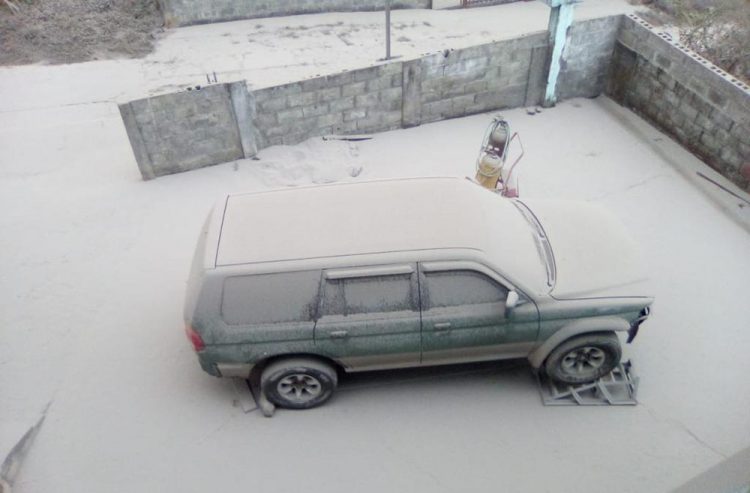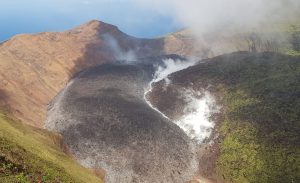New dome in crater of La Soufriere blown away

The new dome that had been forming in the crater of La Soufriere for months has been blown off in the explosive eruptions, sending at least 13 million cubic metres of material into the atmosphere.
Geologist, volcanologist Professor Richard Robertson, who is leading the team of scientists working together to monitor La Soufriere, indicated that from a satellite image obtained, “where the material is coming out, where the dome was coming out, where it originally came out; it now has nothing there. It has an opening and that is where material is now coming out and that’s going up in the air.”
“It seems that a substantial amount of the 2021 dome has gone, it’s been destroyed. It seems that all that black 915 [ft] length piece of bits of rock, all that 13 million cubic metres of material has mainly been destroyed in the activity that we’ve had so far.”

“It doesn’t appear that it has done very much to the 1979 dome, so far but it’s one satellite imagery, it’s not clear what it actually shows, but certainly there is a hole now; a proper vent from which material is being ejected,” he further stated on NBC radio this morning, April 10.
There were three explosive eruptions yesterday posted on the University of the West Indies Seismic Research Centre’s page, and continuous ash venting.
The scientist said that anyone near the volcano would have heard continuous rumbling throughout last night, which only had a brief reprieve at 2:30/3am, and the mountain continued energetic venting.
Explaining this, Robertson informed, “if you think of a very powerful hose, with different pieces of rock in it and then you’re trying to force that through a pipe it could make a sound. It’s the sound of the rock breaking up, of the sound of the conduit itself vibrating, its acoustics, that’s what they’re hearing.”
However, “In terms of the overall pattern of activity, we had at the beginning, and if you look at how the signals overall look, we went over a hump and we are sort of getting more in a downward direction but in between that you’re having some pulsing still.”
Because of the texture of our lava, there will be no lava flows, but the pieces of material jetting into the air may possibly collapse as pyroclastic flows.
A pyroclastic flow is a dense, fast-moving flow of solidified lava pieces, volcanic ash, and hot gases.
The scientists don’t know as yet how much material the volcano has to work with as they don’t know the size of the magma chamber. To gain more information they will, over the next couple of days, be analyzing the ash and gases.
Comparing this eruption to the last eruption in 1979, Robertson said, “I will be surprised if it’s not at least that scale so if you use that as the bottom mark, that is where I’m starting from. I don’t think it’s going to be less than that, it’s probably going to be more than that from what I’m seeing in terms of the size and the amount of material to come out.”
“In other words it’s going to produce much more ash so far than I’m seeing ‘79 did. So it’s going to end up being more than likely a bigger eruption than 79 was,” he explained.
The ashen period is expected to continue today.









